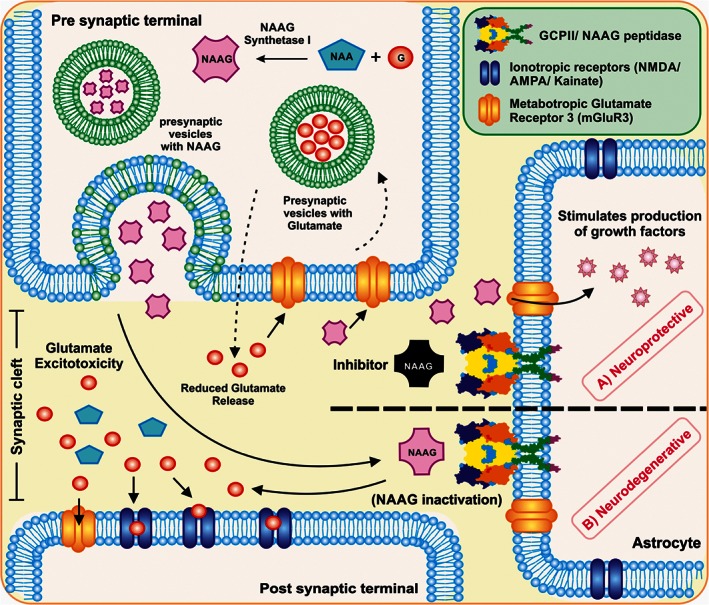Figure 3.

Schematic representation of the role of PSMA/GCPII in the brain. PSMA/GCPII is expressed on the astrocytes and can lead the cells towards a neurodegenerative or a neuroprotective outcome. (A) in the neuroprotective role, to reduce the glutamate excitotoxicity, NAAG inhibitors can be used to competitively bind to the PSMA or to the glutamate receptor, avoiding the hydrolysis of NAAG into NAA and glutamate. Due to this effect, NAAG interacts with the metabotropic receptors on astrocytes, which leads to the production of growth factors and thus acts as a neuroprotective agent. NAAG and glutamate are also regularly recycled into the presynaptic neuron via G‐protein coupled pathway and glutamate‐glutamine pathway, respectively. (B) in the neurodegenerative role, NAAG, a neuropeptide released from the presynaptic neuron in the brain interacts with the PSMA/GCPII transmembrane protein. The interaction causes hydrolysis of NAAG into NAA and glutamate. The excess of glutamate leads to glutamate excitotoxicity in the synaptic cleft and further activates the ionotropic and metabotropic receptors on the post synaptic terminal of the neuron, leading to degeneration of cells.
